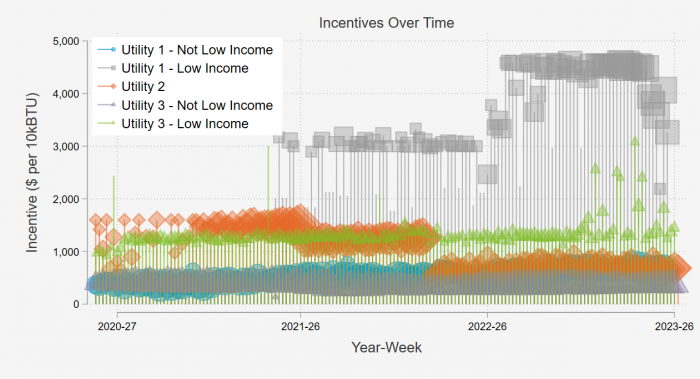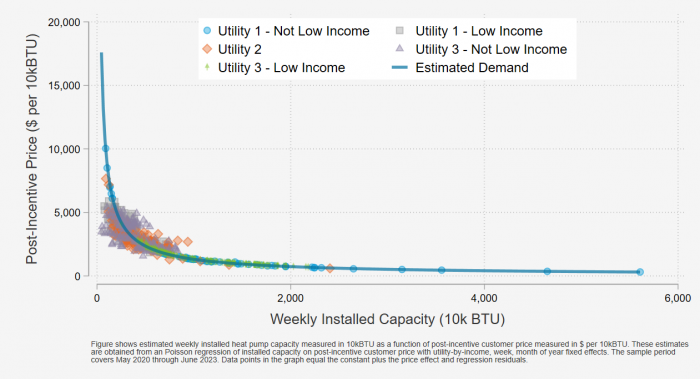Decarbonization and Heat Pumps: How Much do Incentives Influence Adoption?
Posted on by Josh Bode
Many States have adopted decarbonization goals, and heat pumps have become a central element of the decarbonization strategies. The underlying logic is simple. As electric grid supply becomes cleaner, shift heating from fossil fuels (oil, propane, natural gas, wood) to highly efficient electric heat pumps. As a result, we have seen an explosion of heat pump programs and incentives.
However, three fundamental questions remain open:
- By how much can incentives influence and accelerate heat pump adoption?
- Are the policy goals being adopted realistic?
- Are these programs throwing money at customers who would have installed heat pumps on their own (free riders)?

The different utilities and program administrators had various incentive levels with different patterns over time. The incentives have the effect of a discount sale, lowering the customer-facing price. The variation across utilities and time allowed our team to quantify how much incentives influence sales volume – the price elasticity of heat pumps. The plot below shows the relationship after accounting for utility, income, year or week, and seasonal effect. It follows a classic demand curve pattern. When customer-facing prices are high, the volume of heat pumps is lower. When customer-facing prices drop, the volume of heat pumps increases.

The heat pump price elasticities allow us to:
- Develop operational models that allow program administrators to adjust incentives to hit short-term goals;
- Assess the influence of incentives on long-run adoption curves (popularly known as S-curves); and
- Estimate free-ridership as a function of incentives
What we took is a first step. The quality of the analysis and results improves with more experimentation in incentive levels and more locations.

If you are involved with heat pump programs, consider this an invitation to join our effort to answer these critical planning and operational questions.

Marshall Blundell

Josh Bode

Jesse Smith
